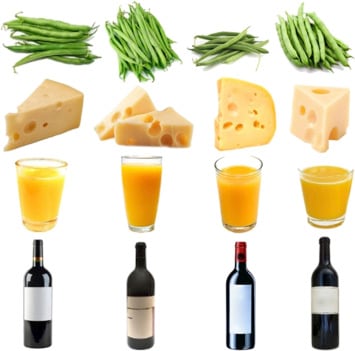The dilemma: food needs to appeal to shoppers and make them want to buy it before they can actually taste it. And so external cues – such as packaging, shape and colour or even lighting – are familiar territory for food marketers and brand strategists wishing to boost a product’s on-shelf attractiveness during new product development (NPD).
But the articulation of a product name – not just its semantic meaning such as ‘Sunshine Orange Juice’ – has never before been considered. And yet it can have an effect on expected palatability and willingness to pay, according to German researchers.
“Future marketing can exploit this effect by increasing the appeal of food products by using inward wandering brand names," write Topolinski et al.

But what exactly is an inward wandering brand name?
"Names that start with the lips and end in the throat.” Words that begin with letters that are pronounced using the front of the mouth – such as p, b or m – mimic movements of the mouth that are associated with eating, whereas the letters such as k, h or g mimic movements that are implicitly associated with outward movements, such as spitting or vomiting.
“Merely uttering an inward word such as Bodok simulates food intake in an abstract fashion, and uttering an outward word like Kodob simulates expelling food,” write the authors, adding that the effect is still seen when words are read silently.
The University of Cologne researchers showed individuals a list of invented product or dish names, such as Pasoki or Kasopi, and asked them to rate the palatability. Words that began with ‘front-of-the-mouth’ letters were rated more highly.
“Marketing agencies and product developers can use the articulation direction of food products to increase expected palatability of their products already in the shelf.
“For shop displays where there are many homogenous specimen for a given category (e.g., many different sorts of wines) the articulation effect is also likely to work. It is also likely that individuals would spend more money on foods or dishes with inward-names.”
The study
In the study, 82 male and female non-psychology students were shown a pool of both inward and outward words (120 in total) that were modified to remove any syllables similar to food or disgust sounds. For instance, the stimulus Kotema starts with the syllable KOT which means excrement in the German language. This was therefore changed to Kitema.

The researchers found that dish names with inward sounds were rated as being more palatable than outward words, an effect that was not influenced by the participants’ hunger.
A second experiment involving 89 different subjects extended the test to include pictures of palatable and less palatable food, and found the effect disappeared as the strong visual information provided by a photo overrode the pronunciation impact.
However, the articulation effect came back in a third experiment that recreated real-life conditions where pictorial information is present but gives little clue as to the sensory aspects of the many products on offer – such as rows of green glass wine bottles on a shelf or a vegetable shop with different sorts of the same vegetable.
When they showed participants pictures of several types of green beans, cheese, wine bottles and orange juice, the articulation effect was once again pronounced.
“This effect occurred for silent reading and for hungry and satiated participants alike,” write the authors.
Source: Appetite Journal
Published online ahead of print 11 January 2016, doi:10.1016/j.appet.2016.01.018
“Mouth-watering words: Articulatory inductions of eating-like mouth movements increase perceived food palatability”
Authors: Sascha Topolinski and Lea Boecker
